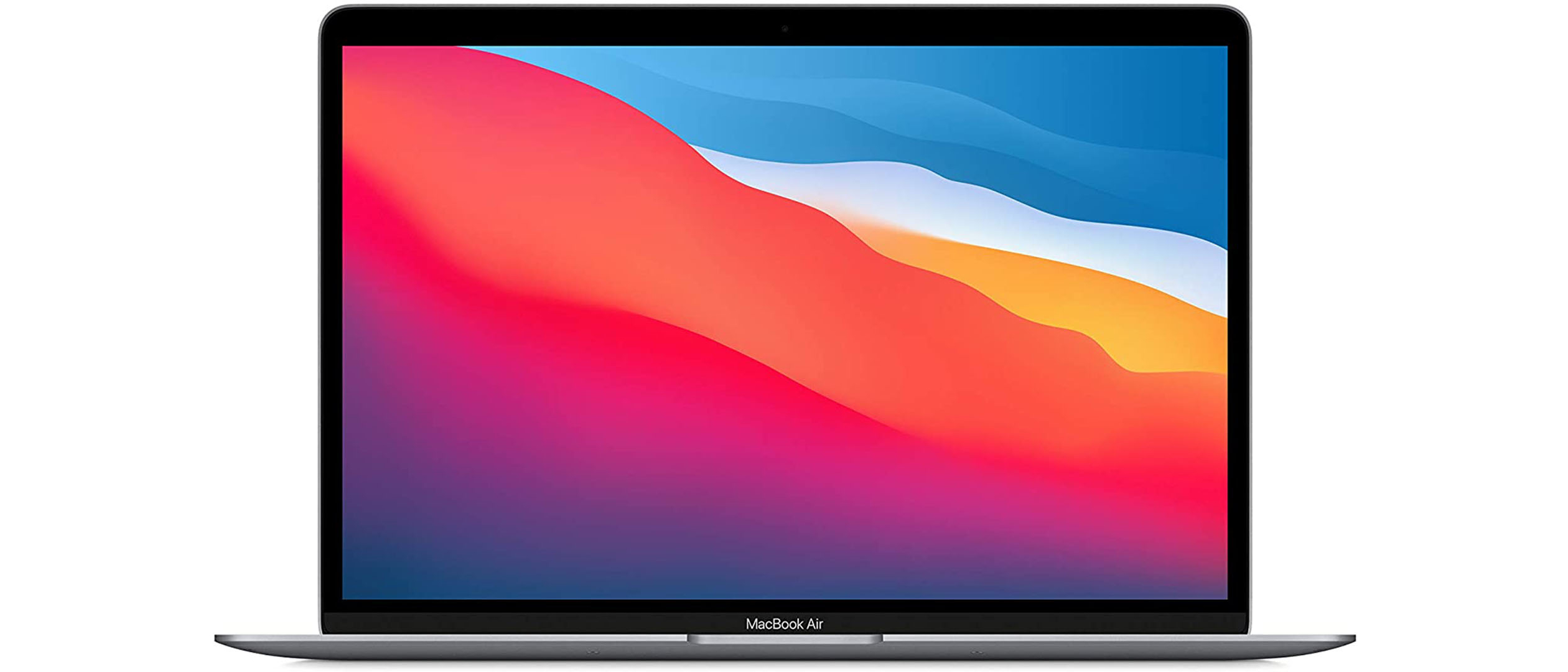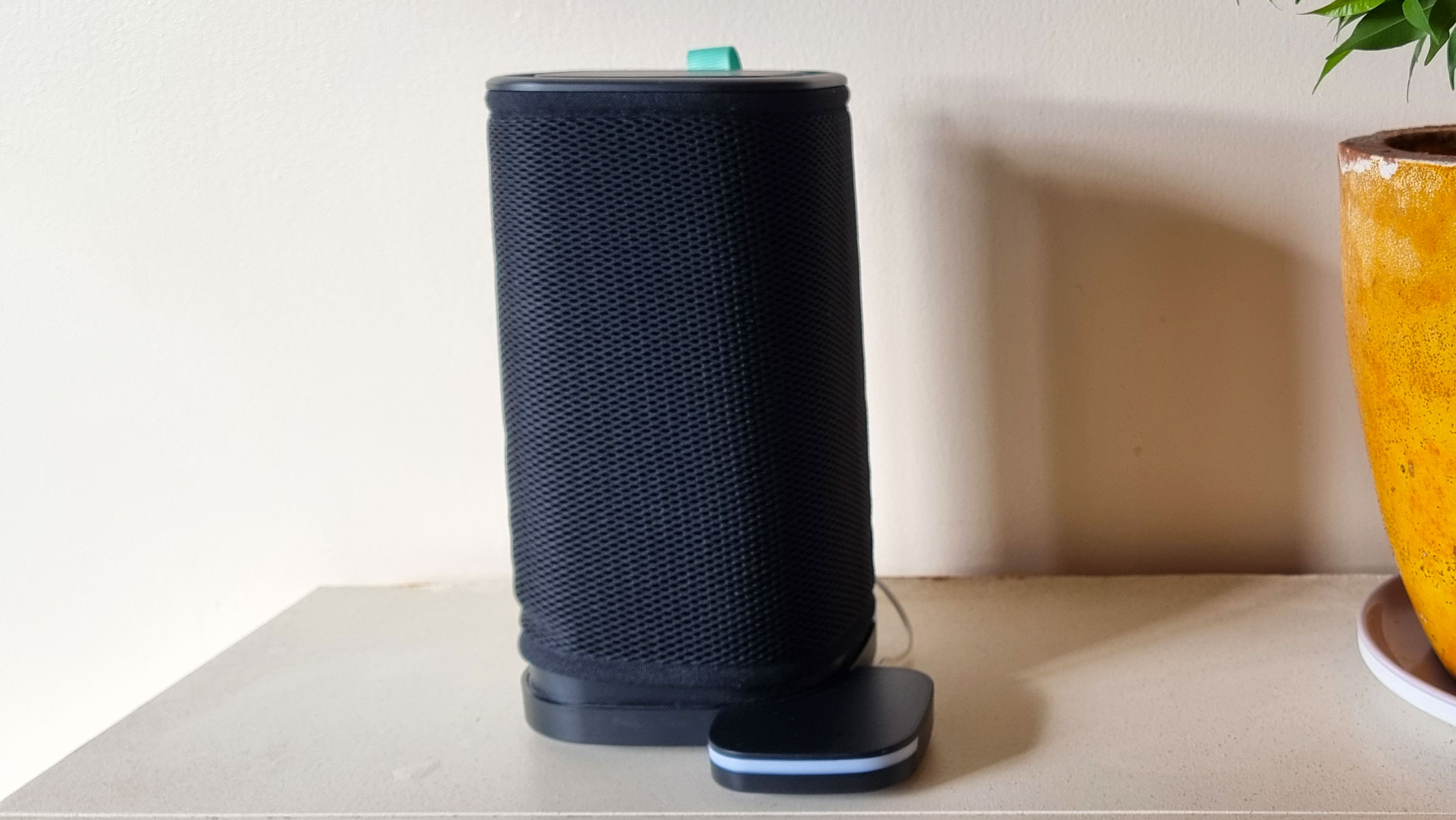Live Science Verdict
The MacBook Air M1 is the cheapest way to get an Apple laptop, and offers a huge power jump over its predecessor – though it feels prime for a redesign in the near future. Still, it's one of the best options out there for students, or anyone that needs a lightweight laptop.
Pros
- +
Most affordable Apple laptop
- +
Incredibly portable
- +
Can run many iPhone apps
Cons
- -
Design is looking dated
- -
720p webcam
- -
Lacking ports
Why you can trust Live Science
Price: $999.00
Screen size: 13.3-inch
Weight: 2.8 lbs (1.27 kg)
Memory: 8GB as standard, configurable up to 16GB
Battery life: up to 15 hours wireless web browsing
Storage: 256GB, 512GB, 1TB, or 2TB versions
Warranty: 1 year, extendable with AppleCare
Operating system: macOS Big Sur
Display: Retina display with 2560 x 1600 resolution, 227 pixels per inch. 400 nits brightness.
CPU: Apple M1 chip 8-core CPU
Graphics: M1 includes 7-core GPU
Ports: two USC-C ports (USB 4 support)
Apple has never been known for “cheap” products, but its lowest-price laptop, the MacBook Air, has been it’s most popular for some time.
The latest version, sporting the company’s own M1 chip instead of prior Intel ones, makes everything about the machine better. It lasts longer, has more power, and still manages to fit inside an incredibly small chassis. That chassis is instantly recognizable, too, but the overall design of the MacBook Air remains the same we’ve had for years.
That said, if you’re after a powerful laptop that’s running macOS and will fit into a small-ish bag, the MacBook Air is the best it’s ever been. It’s got a great keyboard and trackpad, it can run a lot of the apps you’ll find on your iPhone, and it’ll last a full day of use without gasping for a charger.
While we’d have loved a much better webcam (come on Apple, it’s 2022 now and it’s still 720p), this feels like the MacBook Air “coming of age” and fulfilling all of its promise – at least until the rumored 2022 refresh arrives.
MacBook Air M1 review: Set up & usability
Switching on the MacBook Air for the first time will kick start the machine’s setup assistant, and it’s pretty straightforward. Pick a language, pick a location, and log in with your Apple ID.
You’re able to migrate content, apps, and even settings from another Mac via wireless transfer (and can plug it in for increased speeds), while you can also migrate from a Windows machine if this is your first walk on the macOS side of things.
Setup took us just a few minutes with a fresh install, and then you’re ready at the desktop.
MacBook Air M1 review: Design & specs
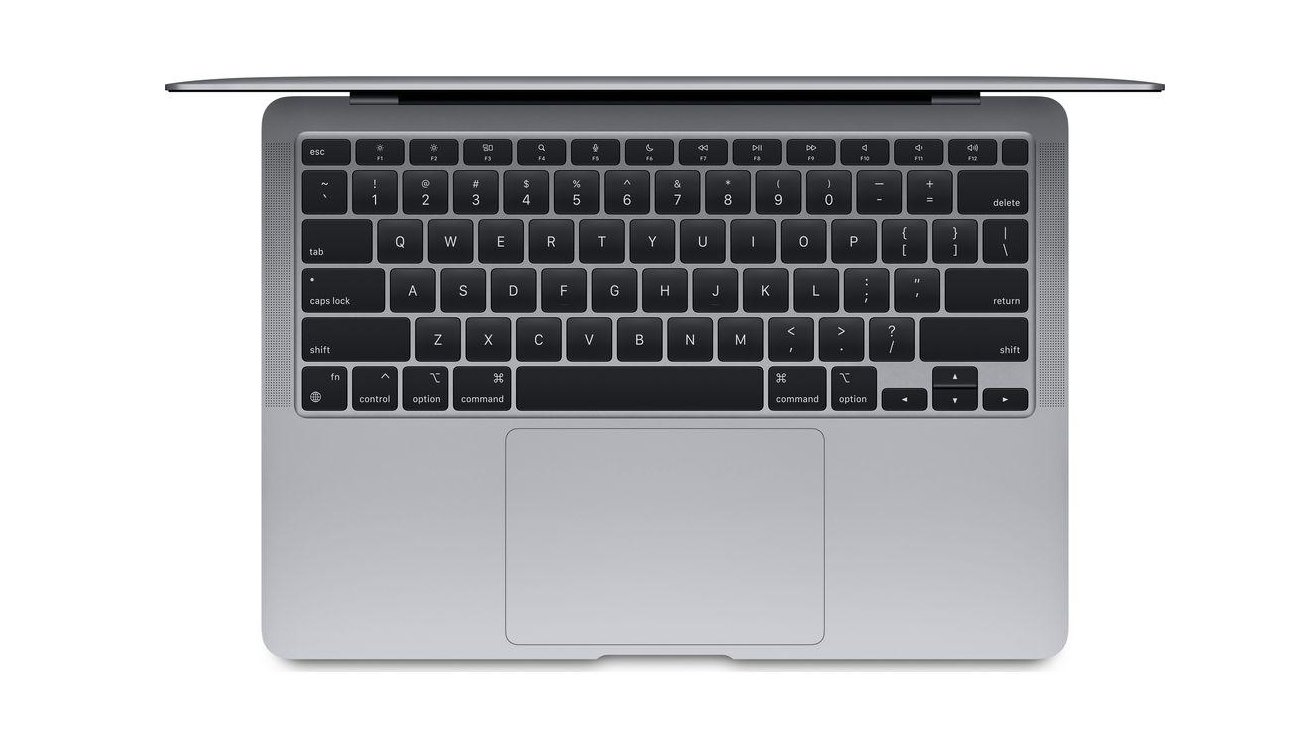
The MacBook Air’s calling card has always been its portability, and that’s not changed here. In fact, from the outside, nothing has changed.
There’s a wedge-like body, with a sizeable trackpad and impressively spacious keyboard on top, the latter flanked by two surprisingly deep-sounding speakers – especially when considering there’s not a great deal of reverberating to be done within such a narrow design.
On the left, you’ll find two USB-C ports, both capable of USB 4.0 speeds, while on the right there’s just a solitary headphone jack. Considering the laptop charges via USB-C, you’ll only have one port if it’s plugged in – something to consider, unless you have a docking station or a dongle.
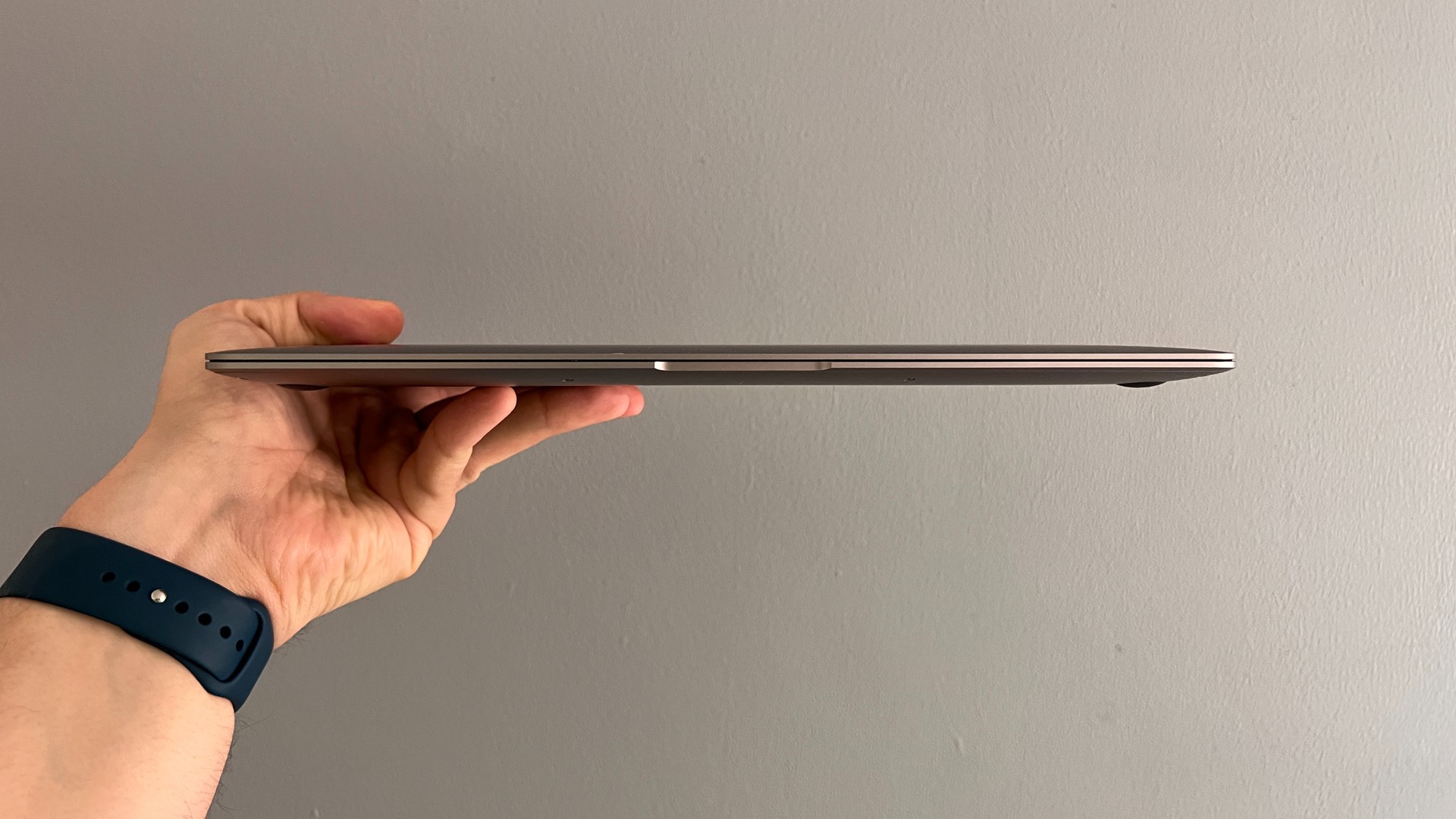
When it comes to the screen, it’s the 13.3-inch, 2560 x 1600 resolution Retina display we’ve come to expect, with 400 nits brightness. It packs True Tone and its colors are plenty accurate, but we’d be lying if we said it pales in comparison to the 14 and 16-inch MacBook Pro displays, or the iPad Pro’s mini-LED backlighting… and yet, this display is still pretty great. While its brightness is less, it never feels too low.
Our only real gripe with the design is that it’s all too familiar. It’s not bad, it’s just a little boring now, regardless of whether you opt for Gold, Silver, or Space Gray.
MacBook Air M1 review: Features & performance
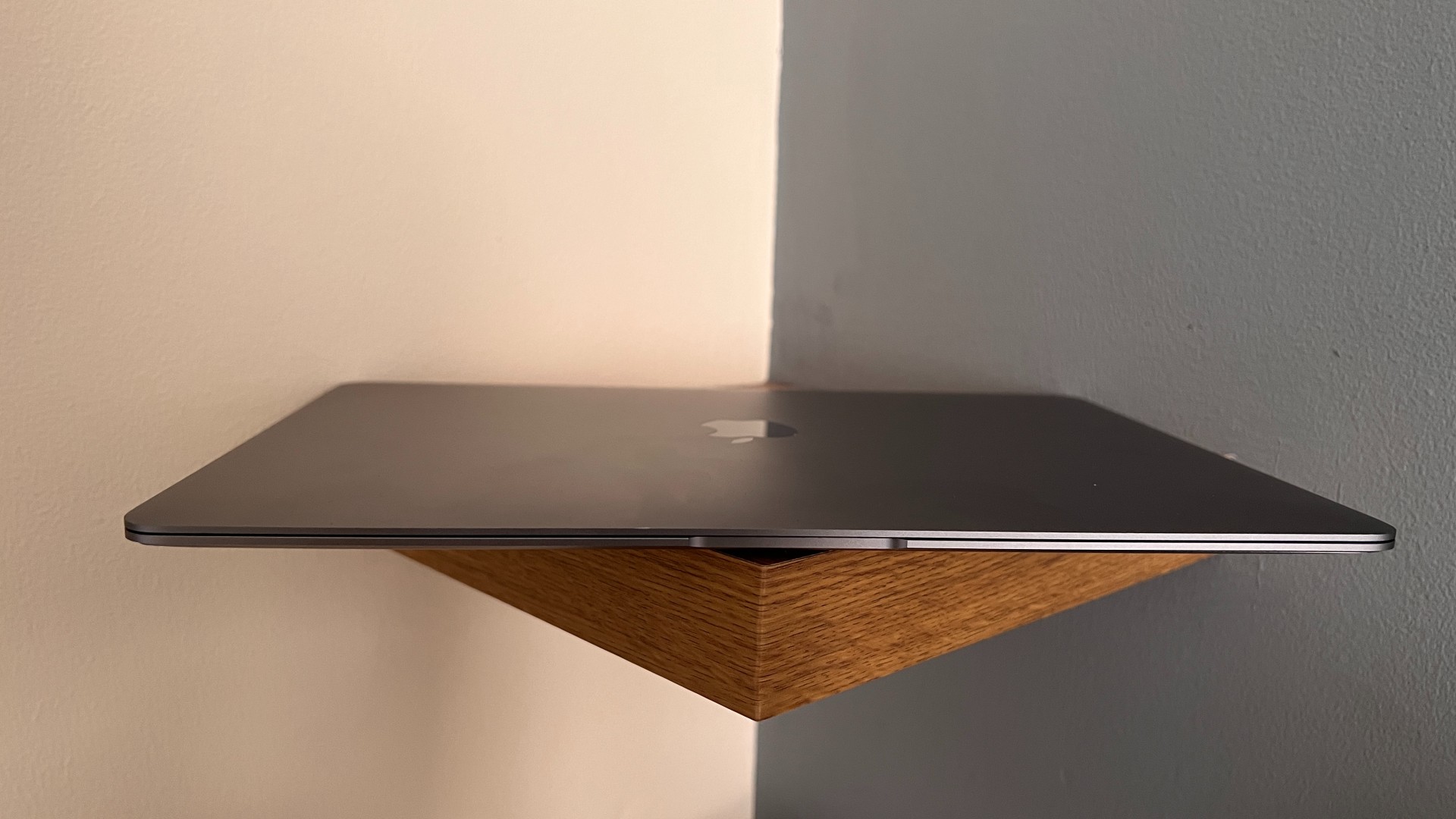
The big draw of this MacBook Air over its Intel-based predecessor is that M1 chip, and it’s just as transformative here as it was on the M1 MacBook Pro.
There are three pillars here – power, efficiency, and compatibility. In terms of power, the M1 MacBook Air blows the prior model out of the water, with a 350% increase in speed. You’ll feel it, too – your emails pop open faster, your notifications are more responsive, and Apple Arcade games look great thanks to the integrated GPU.
It’s that integration that makes the machine so efficient, too. Rather than data being relayed between components like the CPU, GPU, I/O, and SMC, the M1 incorporates all of those components onto an SoC (system on a chip). That means they can talk to each other more quickly, and without the power drain of moving all of that data.
The result? We got fifteen hours of battery life when using the MacBook Air, editing documents, sending emails, and streaming audio. We even found time to watch some YouTube content, with the laptop keeping up. Better yet, because its architecture is heavily inspired by the iPhone and iPad, if you leave the laptop to sleep or close the lid, it’ll be ready and waiting for you, waking instantly.
If you need something for resource intensive tasks like coding, then the MacBook Pro is probably a better choice, but it should be able to compile and test code for you without melting into a pile of goo.
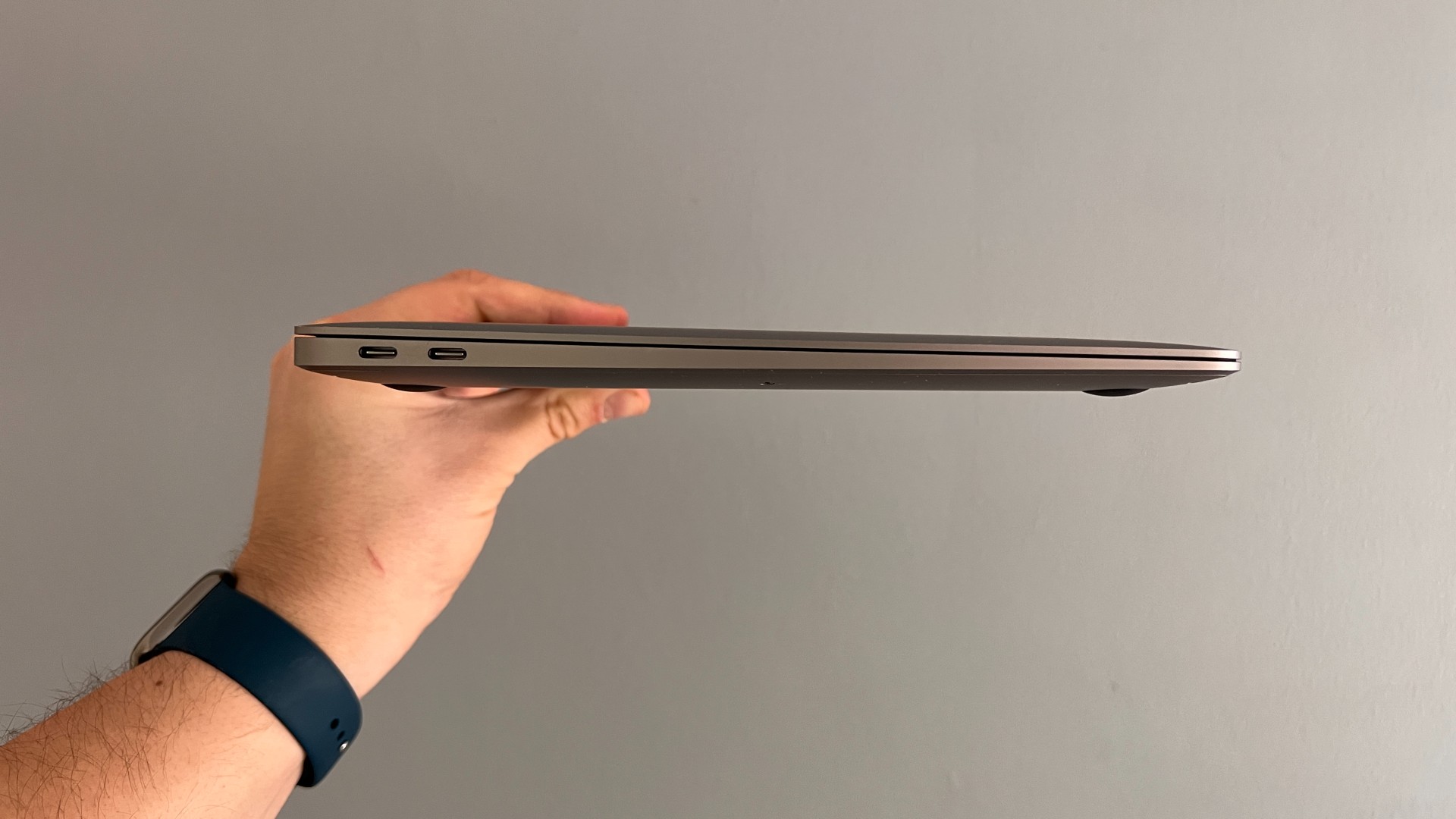
Finally, compatibility. Because the M1 is close cousins with the iPhone and iPad chips, there’s some crossover. That means that the M1 can actually run a lot of the apps you may already own, and the list keeps growing, too.
If you’re worried about your Intel apps not working, fret not. Apple has developed a translation tool called Rosetta 2 that converts Intel apps in M1 compatible versions the first time you run them. You’ll barely notice a difference, but as more apps are upgraded to support M1 natively, it’ll only get better.
It’s not all good news, though, and much of that feeds back to the M1 reworking the inside but the outside is left unchanged. We’re sorry to say that yep, the FaceTime camera is still 720p, which means it’s blurry in decent light and almost unusable in low light.
It’s also going to be a tough sell for anyone that needs those extra ports, particularly if you use multiple displays. The M1 MacBook Air will natively support both its own display and one external display (if you have a dongle), meaning you’ll have to find a way around this with some third-party drivers and additional dongles. It’s not impossible, but it’s not easy. It’s also the kind of thing that’s likely to be remedied by an inevitable M2, with the MacBook Air rumored to be getting a refresh in 2022.
MacBook Air M1 review: Price
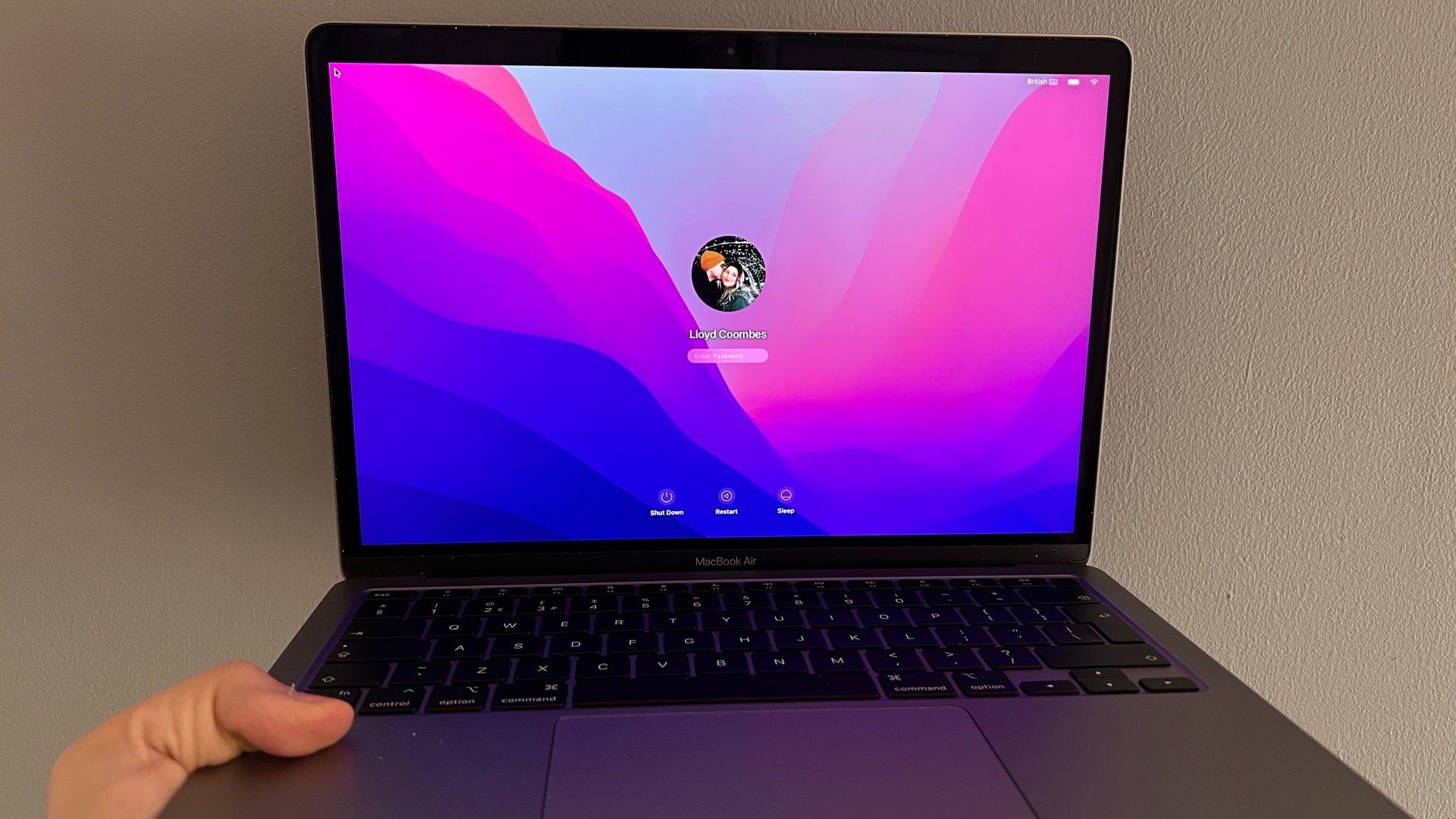
The MacBook Air starts at $999, which makes it Apple’s cheapest laptop – despite costing double what a Windows laptop could cost. As always, though, Apple machines tend to last longer than their Windows-based counterparts, and we expect that to hold even more true with the M1 architecture.
For that money you’ll be getting a 256GB SSD, which may not be enough for some. Upgrading to 512GB will set you back $1249, but you do get an extra core on the GPU. Whatever you buy, you’ll want to be certain it’s enough, because Apple’s laptops aren’t able to be added to – what you buy is what you get, meaning that 512GB SSD may be a better option for you in the long term.
Students can get Apple's cheapest laptop even cheaper via the Apple student discount, which usually offers around 10% off the standard price. Check out our guide to find out how.
MacBook Air M1 review: User reviews
While many Amazon user reviews are impressed with the battery life and performance of the M1 processor – giving the laptop a 4.8 stars out of 5 – many have been damning when discussing the camera.
Others have mentioned, as we have, that you really should buy as much storage as you think you’ll need – especially since you can’t change it later.
Should you buy the MacBook Air M1?
The MacBook Air is the perfect laptop for anyone that wants to fire off emails, scroll social media, and play Mac games. It’s also a pretty capable machine for editing audio, images, and even video, although it has a ceiling. We think it's a perfect choice for students who need a capable, lightweight machine to use for their studying and entertainment needs.
If you want more headroom, more ports, and naturally more power, the MacBook Pro 16-inch could be a better fit, but it’s also approaching twice the price.
Our advice? Hold out for a little longer, and see what 2022 brings. Best case scenario, you’ll get a portable, powerful MacBook Air that’s even more capable and may have more ports, and if you don’t, this is still an excellent option.
If this product isn’t for you
There are a whole host of Windows machines that are cheaper, but if you’re looking for a little more grunt we’d recommend the 13-inch MacBook Pro as it’s the closest you’ll find for the price. If you’re looking for a lot more power, you can also look at the new 14-inch or 16-inch MacBook Pro machines that carry the M1 Pro and M1 Max chips for huge performance leaps.
If Windows devices are more your thing, you can also check out the Microsoft Surface Laptop 4, which is a great stylish alternative to the Apple ecosystem. You get all the build quality and smart design of a Mac, but with a Windows operating system.
Lloyd Coombes freelance tech and fitness writer for Live Science. He's an expert in all things Apple as well as in computer and gaming tech, with previous works published on TechRadar, Tom's Guide, Live Science and more. You'll find him regularly testing the latest MacBook or iPhone, but he spends most of his time writing about video games as Gaming Editor for the Daily Star. He also covers board games and virtual reality, just to round out the nerdy pursuits.
